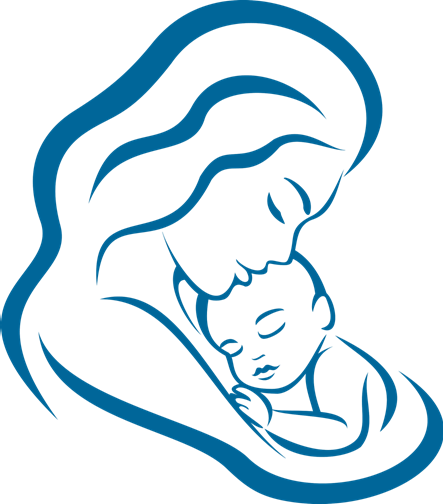How Do You Get a Birth Certificate after an Unassisted Birth?
One of the biggest challenges of giving birth unassisted is getting a birth certificate after the fact. As expected, each state has its own rules and regulations regarding the reporting of a birth.
When there is a medical attendant such as a midwife or doctor, you don’t have to worry about this part. Your provider will report the birth for you, and all you have to do is order a copy of the birth certificate. However, when you give birth unassisted, you have to do both.
You’ll want to go to the place where you would order a birth certificate first. This agency is often called the Office of Vital Records and Statistics. It may be part of the Health Department. You’re going to have to speak to the employee there and let them know you need to report a birth. It helps if you tell them that your baby was or is going to be born at home. Hopefully, this will get you the paperwork you need.
Don’t Wait until after the Birth to Research How to Get A Birth Certificate
It’s quite possible that your state requires you to submit proof of your pregnancy or prenatal records to let you report a birth. That’s why it makes sense to get the forms before you give birth. Obviously, it’s difficult to get proof of your pregnancy once you’re no longer pregnant. It’s probably easiest to provide as much proof as they ask for. It may be extra trouble for you, but getting a birth certificate and a social security card for your baby is important.
What You May Need to Get a Birth Certificate after Your Homebirth:
- Proof of your pregnancy
- Copy of your prenatal records
- Signed affidavit of your birth attendant (usually your partner)
- Letter from a doctor who examined the baby after birth
- Church records (for example, your baby’s baptism)
- Proof of residency (mortgage statement, utility bills, etc.)
- DNA test to prove the baby is yours (shouldn’t be necessary)
You should know that if people give you a hard time, it’s time to assert yourself. You have the RIGHT to get a birth certificate for your baby, no matter how difficult they want to make it for you. Don’t give up!
Why Is It So Difficult to Report a Birth?
Obviously, you don’t want everybody reporting births that didn’t happen. In order to keep public records straight, they need some proof of your baby being born. If it were easy to report a birth, lots of people would do so, even if it’s just to claim a child on their income tax return. To report a birth, you may be required to submit proof of your pregnancy, proof of residency, and proof of the baby’s existence.
How to Get a Birth Certificates in Texas after a Homebirth
To make it easier, I have compiled a summary of getting a birth certificate after an unassisted birth in the state of Texas. You’ll need to verify this information with the state to get the most updated version. However, I don’t foresee this process to change very often.
Documentations You Need to Report a Birth in Texas:
- Proof of your pregnancy: This has to be a notarized affidavit from a medical provider.
- Proof that the infant was born alive: A medical record for your baby or a letter from a provider.
- Proof that the infant was born in the registration district: If your baby was born at home, you just need proof of residency for this (utility bill, rent receipt etc.).
- Proof That the infant was born on the date stated: A medical record from a licensed institution.
You can use an affidavit to satisfy one of the above points. Let’s say you didn’t take your baby to a doctor on the day he or she was born. In that case, ask a friend or family member to sign an affidavit stating that the infant was, in fact, born on that day at that time at your residence.
Get that affidavit notarized. Most banks will notarize free of charge, but places like UPS may offer notary services for a small fee, too. Be as specific as possible on the affidavit (even to the point of being redundant) to avoid having to do it over. For example, the affidavit shouldn’t just list the date and time the baby was born, but also the names and addresses of the parent and the birthplace of the baby.
Where to Get a Birth Certificate
Vital Statistics is in charge of reporting births. You’ll have to go to your local registrar’s office in order to work on this paperwork. They’ll also ask you to fill out a mother’s worksheet (where you’ll need to fill in some information about your pregnancy such as length of gestation, date of last menstrual cycle etc.).

The Official Instructions
Texas used to have the reporting requirements online, but the link to the Birth Registration Handbook doesn’t work anymore. To get the most up-to-date information, I recommend talking to someone at your local Vital Statistics office.
Below, I have copied the information that pertains to unassisted homebirths.
“NON-INSTITUTIONAL BIRTH NOT ATTENDED BY A REGISTERED, CERTIFIED OR DOCUMENTED HEALTH CARE PROVIDER.
If there is no physician, midwife, or person acting as midwife in attendance at a non-institutional birth, documentation is required from the parent(s) before a birth certificate may be filed.
In an effort to control fraudulent filings of birth records and to place control over blank forms, the Texas Vital Statistics Unit (VSU) and Texas Board of Health developed and approved rules for filing birth certificates for children born outside licensed institutions. [25 TAC §181.26]
To insure uniform compliance throughout the state, VSU developed the following administrative comments and instructions.
To file a birth certificate with the appropriate local registrar the following proof must be presented to the local registrar by the person in attendance at the birth in the following order of preference:
- The father or mother of the child; or
- The owner or householder of the premises where the birth occurs.
The registrar may provide to the person filing the birth record a “Mothers Work Sheet” in order to gather the information to be placed on the birth record.
A birth a birth certificate can be filed only upon personal presentation of the following evidence
Note: Only one affidavit of personal knowledge of one of the four items can be used.
PROOF OF PREGNANCY, PRESENTED IN FOLLOWING ORDER OF PREFERENCE
- An affidavit (notarized) presented from a licensed, registered, or certified health care provider who is qualified to determine pregnancy as part of the scope of his or her license or registration, or certification; or
- An affidavit (notarized) along with photocopy of ID (for example, a driver’s license or government ID, etc.) presented from one person, other than the parents, having knowledge of the pregnancy/birth
PROOF THAT THE INFANT WAS BORN ALIVE
- A medical record or a letter from a licensed, registered, or certified health care provider or medical institution; or
- An affidavit (notarized) along with photocopy of ID (for example, a driver’s license or government ID, etc.) presented from one person, other than the parents, having knowledge of the pregnancy/birth.
PROOF THAT THE INFANT WAS BORN IN THE REGISTRATION DISTRICT
- If the birth occurred outside the mother’s primary place of residence, proof shall consist of an affidavit (notarized) along with a photocopy of ID from a person having knowledge of the mother’s presence in the registration district on the date of the birth.
- If the birth occurred in the mother’s primary place of residence, proof of residence in the following order of preference:
- A utility bill, telephone, or other bill which includes the mother’s name and address;
o A rent receipt which includes the mother’s name, address, and signature of the mother’s landlord; - A driver’s license, or state issued identification card, which includes the mother’s current address on the face of the license or card;
- An envelope addressed to the mother at her place of residence, and post marked prior to the date of birth; or
- An affidavit (notarized) attesting to the mother’s place of residence along with a photocopy of ID from a person, other than the father, who was either living with the mother at the time of the alleged birth, or has other knowledge of the mother’s residency.
PROOF THAT THE INFANT WAS BORN ON THE DATE STATED
- A medical record or a letter from a licensed, registered, or certified health care provider or medical institution; or
- An affidavit (notarized) presented from one person along with photocopy of ID, other than the parents, having knowledge of the pregnancy/birth.
OTHER SUPPLEMENTAL INFORMATION PROVING HOME BIRTH
At the discretion of the local registrar, these procedures may be supplemented with any additional requirements needed to verify the circumstances of the birth. Additional requirements may include, but are not limited to, one or more of the following:
- An unannounced visit by a public health nurse, other health professional, registrar staff, or other person including city, county, state, or federal law enforcement officers, prior to registering the birth. This paragraph does not permit nor give authority to enter these premises unless permission is obtained from the occupant at the time of the visit [emphasis added];
- Multiple forms of identifying documents, with or without photographs, when the documents described in this section are unavailable;
- Personal appearance of both parents, either together or separately; or
- Personal appearance of the infant whose birth certificate the parents are attempting to file
Any person who cannot meet the documentation requirements should be referred to the State Registrar and the Fraud Prevention Program. See the information under “Persons and/or Records Not Meeting Requirements for Filing.”
The documentation that has been submitted as proof should be returned to the person filing the record after the birth record is accepted. Each local registrar must notify the Fraud Prevention Program of any suspicious documents or records submitted or filed with his or her office.
If the individual(s) attempting to file the birth records of a child not born in an institution cannot meet the four essential elements required for filing (proof of pregnancy, proof the infant was born alive, proof the infant was born in the registration district, and proof the infant was born on the date stated), the local registrar will forward the record and all documentation to the State Registrar for his or her determination.
- The local registrar will send a cover letter with the documentation explaining why he or she cannot accept the record for filing.
- The local registrar will give a letter to the parent(s) and/or person trying to file the record telling them why he or she cannot accept the record for filing and that the request and documentation have been sent to Austin for the State Registrar’s determination.
- Upon receipt of the birth record from the local registrar within one year of the date of birth, the State Registrar will direct the Fraud Prevention Program to further verify or investigate as necessary to determine to accept or not accept the documentation sent.
If the documentation is deemed unacceptable the State Registrar will send a letter referring the parent(s) to a Texas district court for a judicial determination and order to file a Certificate of Birth. If the birth occurred more than a year before the parent(s) attempt to file a delayed birth certificate, and the documentation is deemed unacceptable, the State Registrar may refer the case to the county judge of the alleged county of birth for a judicial decision.”
Are You Interested in Unassisted Childbirth?
The Unassisted Baby is THE comprehensive guide every woman needs to give birth on her own. It includes information about prenatal care, pregnancy concerns, signs of labor, stages of labor and birth, potential complications, and even a guide for fathers. Get your copy of this invaluable resource today!

